Winter warmers for the flamingos
As the clocks go back and the months turn colder, the living collections team at WWT Slimbridge focuses on the needs of those species that need a little bit more TLC when it turns chilly. This is true for the flamingos as well as for the other animals in the collection too. For example, comfy beds of straw are piled up in some enclosures for the ducks and geese to sleep on.
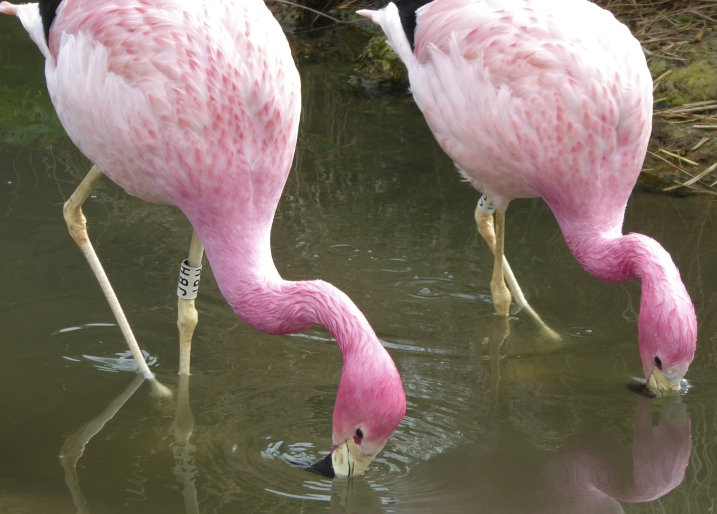
Flamingos are tougher than they look. These are bird built for wading around in caustic soda lakes where the water can strip human skin and flesh to the bone. They are also found in coastal wetlands and so are quite happy in salty water too. Finally, flamingos can live at high altitudes, up to 4000 metres above sea level where night time temperatures regularly drop below freezing. The birds must have special adaptations to extreme wetlands to be able to survive and thrive in them. However, not all flamingo species are particularly happy when the weather turns chill.
Andean flamingos (pictured above) can withstand very low temperatures and freezing water in the wetlands of the South American mountains. Like all flamingos, they feed by filtering food from the lake's water. When a lake freezes over, the birds cannot filter for food so they have to move to a new feeding spot. In animal collections, we have to make sure that flamingos are kept on ice-free water so they can always find their food.
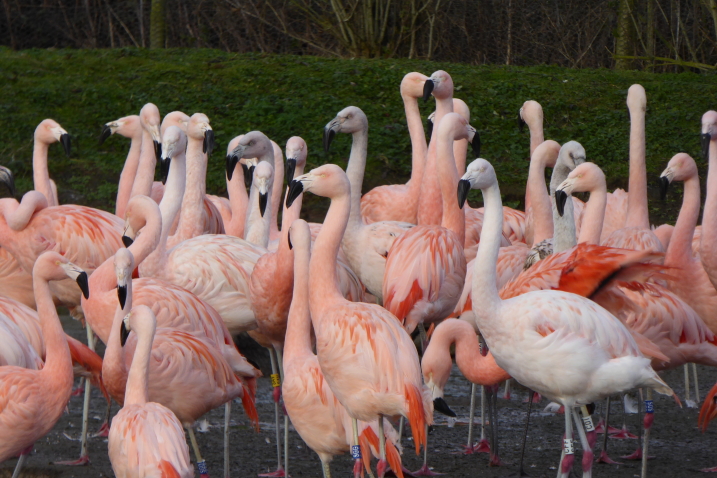
Chilean flamingos (above) are found at high elevations and therefore are more cold tolerant than some other flamingo species. Chilean flamingos can feed on a range of different aquatic lifeforms- from plant to animal material. They can be more flexible, compared to other more specialised flamingo species. in their choice of location and habitat for foraging in.
Lesser flamingos and Caribbean flamingos are not really "cold proof". They enjoy their creature comforts when it gets warm and need to be provided with extra heat inside their houses during the winter. The tiny size of the lesser flamingo means it is particularly vulnerable to driving winter winds and rain (although no flamingo enjoys the wind blowing under their tails), and so these birds will more often be inside over the autumn and winter. You can still see the lesser flamingos when they are inside from the viewing windows. Take a look closely and you'll see the indoor "beach" that Phil has created for the flamingos. Using sand really helps to keep the bird's feet in excellent condition and because the lessers use their house more than the other species, this is one of the way that we help to keep them comfortable when they are inside.
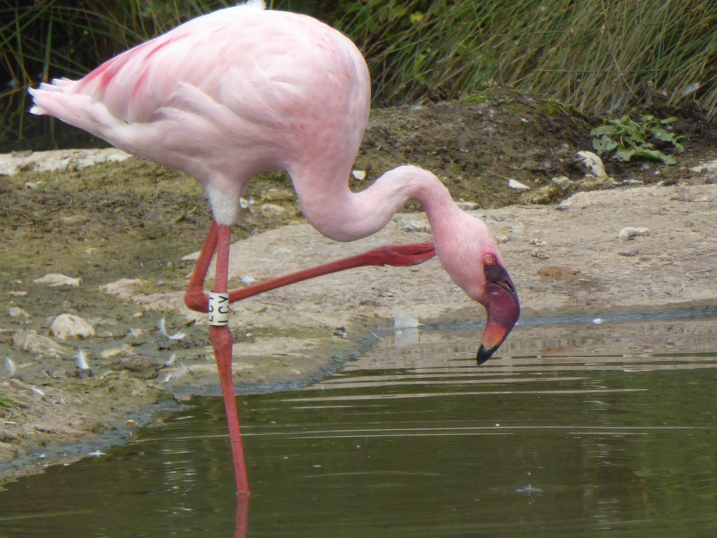
Lesser flamingos, like the one in the photo above, may not be that keen on the cold, but they have lots of adaptations to surviving in lakes of caustic soda, where the pH of the water can be greater than 12 (very, very alkaline). Toughened skin on their legs and feet, plus a thick coating of feathers protects the birds from any damage to their feather. Lesser flamingos can also drink water from hot springs that feeds these lakes- and when we say hot we mean at temperatures close to boiling point.
We have also been installing new lighting into the Caribbean flamingo house at WWT Slimbridge, with an aim of mimicking the natural day length that the birds would experience in the wild, even when the days are shorter here in the British winter. What about wild flamingos? How do they deal with the extremes of the environment that they inhabit?
The adaptations that flamingos have to withstand the harsh conditions of their natural habitats include:
- Tough scaly skin on their legs and feet.
- A counter-current blood supply in their legs and feet so they do not lose heat when wading around in cold water. Blood travelling up the leg from the foot is warmed by blood travelling down the leg from the body and so the bird saves energy.
- Preening behaviour to remove crusty salt residues from their feathers, to keep themselves insulated and waterproof.
- An efficient way of processing the chemicals from their food, which are toxic, in their livers to create their beautiful pink colours.
- An ability to drink water near to boiling point.
- Salt extraction glands in their bill so they can drink water of a high salinity.
- Flamingos are also nomadic in their movements, so they will travel to new (more favourable areas) when conditions in their current location are not looking that fun...
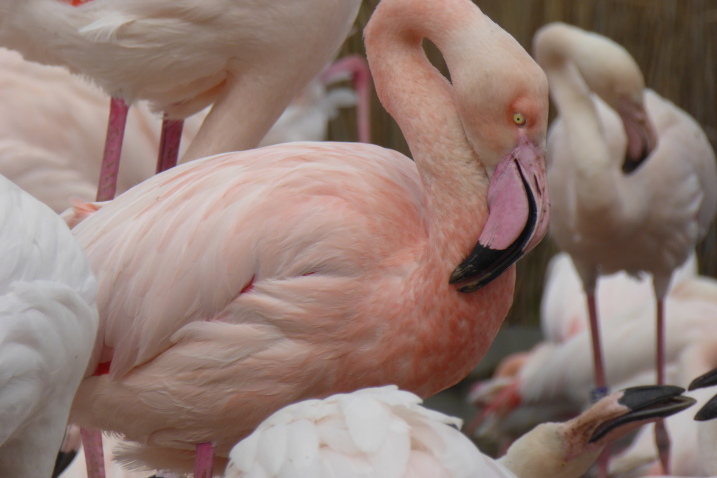
A greater flamingo (above) preens its body feathers. Even with their seemingly awkward bills, flamingos are able to preen and clean each individual body feather carefully. This preening behaviour is important because birds have to regularly clean soda crystals off their feathers, which can form when flamingos are wading around in very salty water.
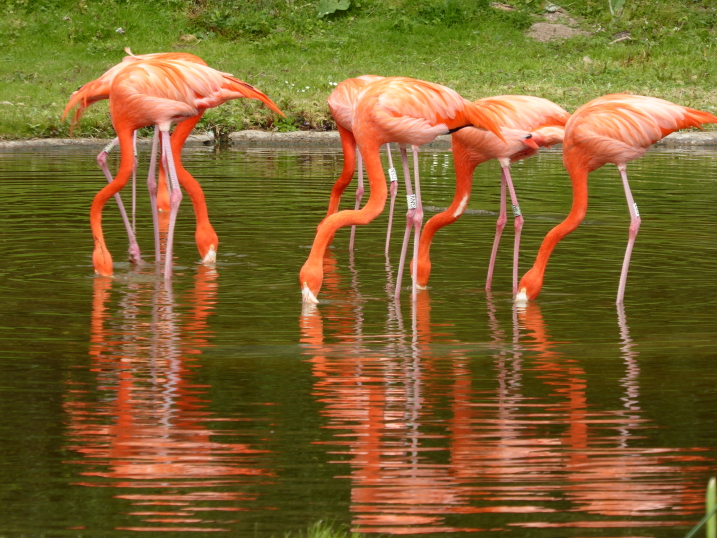
Some scientists believe that the Caribbean flamingo (above) has the largest and most efficient salt glands of any flamingo species as, due to the part of the world they live, they are more likely to be drinking seawater.
This November's edition of WWT Slimbridge's "WildWatch" will tell you more about the flamingos in winter and how we keep them snug and warm.



